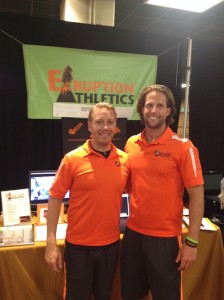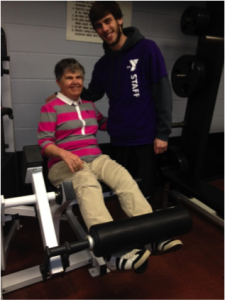60th Anniversary Marks Milestone for The Arc of New Mexico
How Diversity Is Strength at The Arc of New Mexico
There were many reasons to celebrate at The Arc of New Mexico State Annual Conference in June. Balloons and a bedecked cake displaying “60 years” were visible reminders of how far they’ve come.
Randy Costales, Executive Director of The Arc of New Mexico, says that in a state with a variety of cultures, languages, and backgrounds, it can be difficult to meet the needs of each community. Although New Mexico has only one local chapter The Arc of New Mexico has established Statewide Advocacy Network that includes the local chapter, a southern office and several home offices throughout the state. Over time he has found that opening several home offices throughout the state helps cut costs and provide better services.
“We have to be able to respond to the needs of all the citizens of New Mexico that have I/DD regardless of their age, ethnicity, or background,” said Costales.
The Southern New Mexico office was established 15 years ago to provide services to Dona Ana County, one of the poorest counties in New Mexico. A majority of the population is Hispanic and all staff are bilingual. A key to the success of this office is having employees from the area who can understand the needs of that region. Other offices have been established in Santa Fe, Silver City and soon in Roswell.
In another region of the state The Arc of New Mexico provides funding to The Arc of San Juan County, near the Navajo Nation, to provide advocacy. Advocate Dolores Harden, an employee of the local chapter, is known for her ability to relate with the people she serves on a personal level. Harden, who has two sons with intellectual and developmental disabilities (I/DD), visits and serves individuals and families at their homes and is also involved in a self-determination program for people with Down syndrome. Costales says that her work has been integral to The Arc’s success in New Mexico.
“She is a quiet, unassuming woman who is one of the most effective advocates I’ve ever seen,” said Costales. “Because of her, we have reached more people.”
Thanks to the Isabel Gonzales Trust established in 2010, The Arc of New Mexico is able to provide special services and support for individuals with Down syndrome and their families. The Arc of New Mexico has used funds to provide person centered planning for people with Down syndrome and their families as well as stipends to attend national and state conferences.
“We’re very appreciative of the partnership with the national office,” said Costales of this joint venture of The Arc of New Mexico and The Arc’s national office.
There are many areas of the country with diverse populations and thanks to a grant from the MetLife Foundation, The Arc is launching a new diversity initiative to make programs and services more accessible to those diverse communities. The Arc’s national staff looks forward to learning from chapters with rich diversity like The Arc of Mexico, and hopes other chapters will find inspiration from all this state chapter has accomplished.
With 60 years of experience, the organization looks to the future of service for individuals with I/DD in New Mexico. Lessons from the past will ensure many future successes and growth for this powerful chapter of The Arc.
“What I love about my job is the diversity of the people we serve,” said Costales. “Each county and community is different.”











